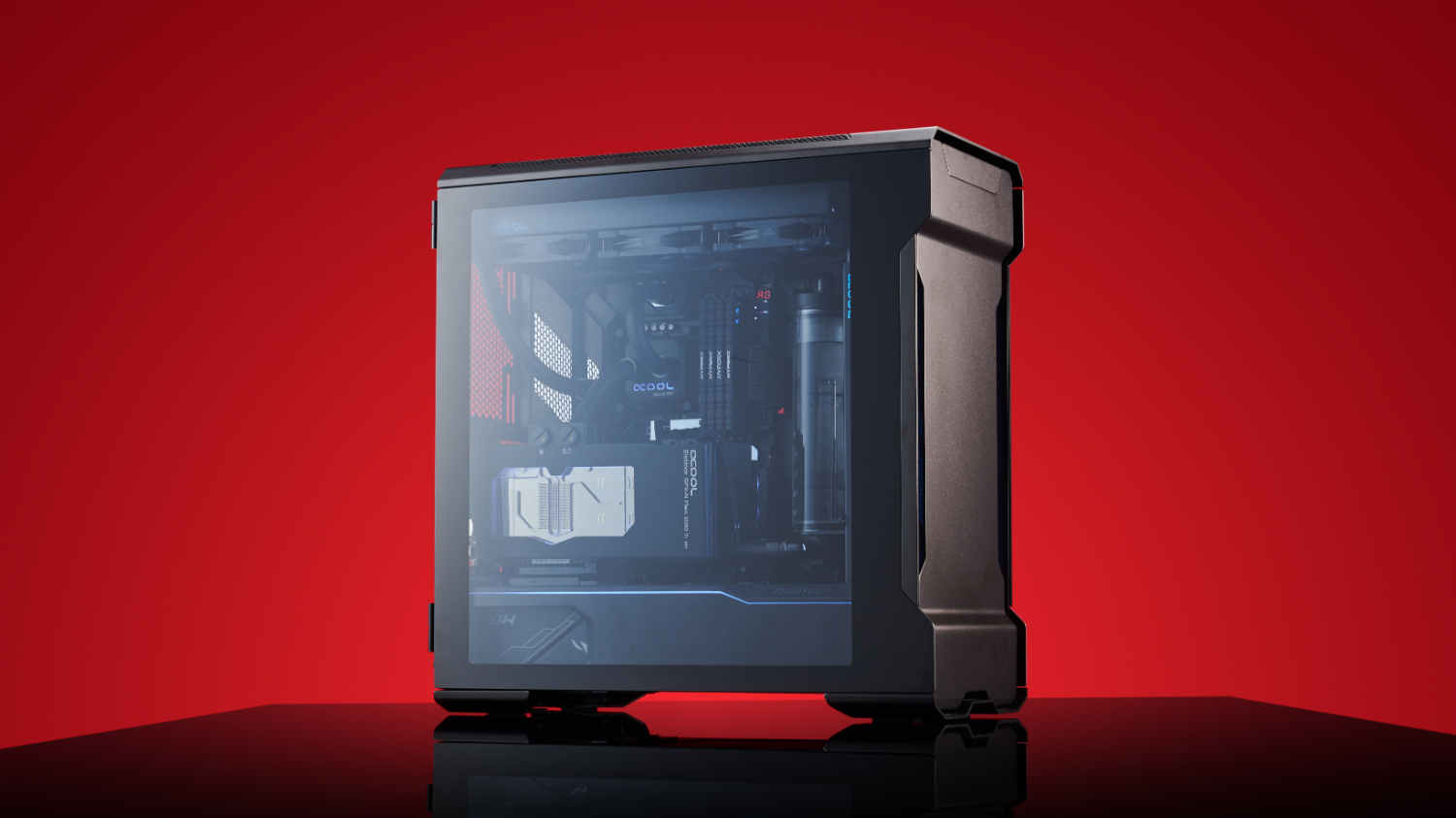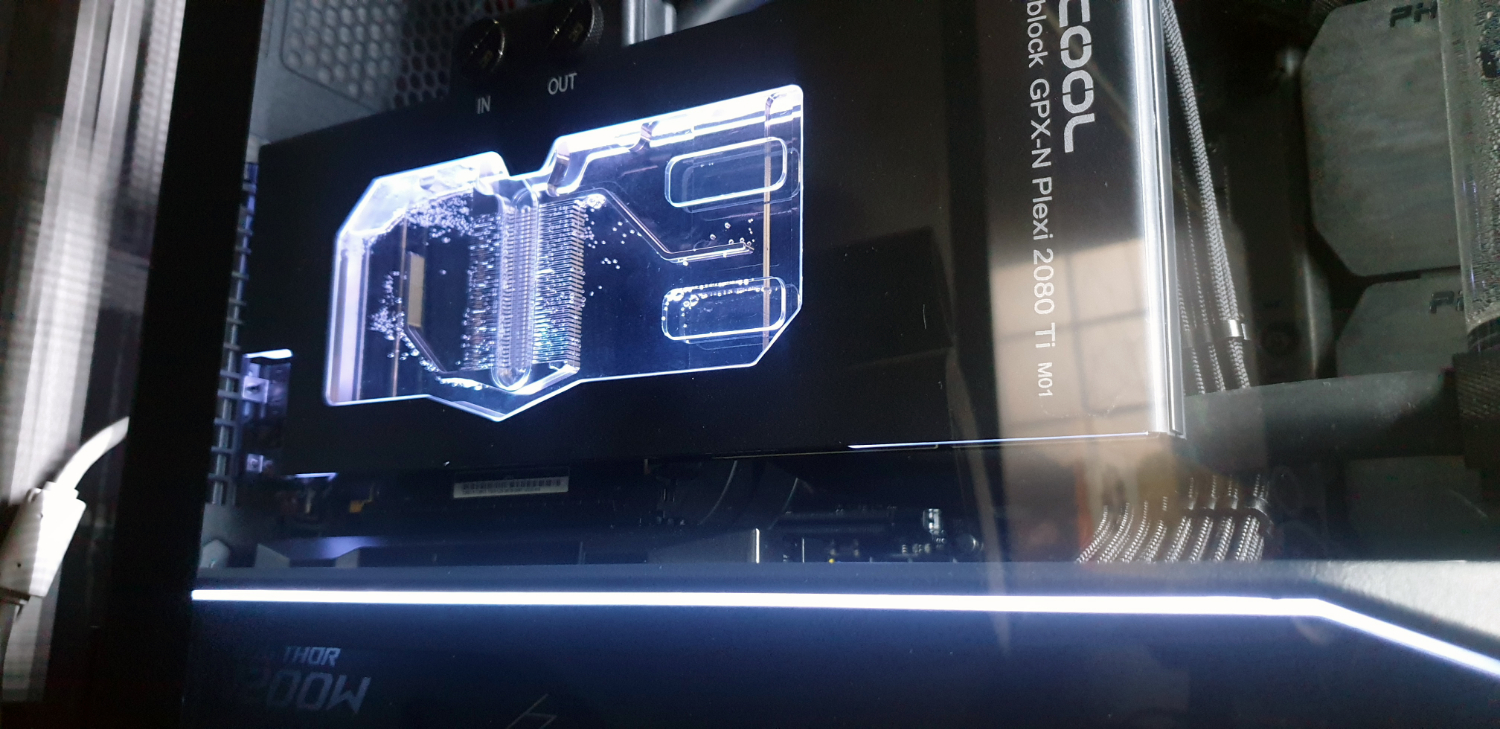Silent But Deadly PC: How We Built a Quiet, RGB-Free Desktop
The Quiet, RGB-Free Desktop

Back in January, we mused over just how rampant the current trend of RGB lighting is in this beloved hobby of ours. Indeed, it’s hard to find products nowadays that aren’t littered with the garnishings of those ever present pulsating lights. However, we believe, not everyone is enticed by the subtle delicacies, and intricacies of those whirling 16.8 million colors. Some of us are after something a little more classy, something with a little more substance, sophistication.
With that in mind, I set out to build a "Silent But Deadly" PC that is quiet both in terms of design and noise level. It’s a machine that’s bucking the trend of both RGB lighting, and hard tubing in favor of something a little more robust, more manageable, and far easier for those fresh into the liquid-cooling scene to build.
Yep, it’s a watercooled machine, complete with a 16mm outer diameter matte black rubber soft-tubing, combined with twin 360mm radiators, and a whole armada of fittings, pumps, reservoirs, blocks and half a dozen of the ever-effervescent Noctua NF-F12 Chromax fans, complete with black noise dampening tips. So yeah it’s going to be cool, it’s going to be slick, and it’s going to be quiet.

But after all, we’re not so petty as to just create this rig because “herp derp RGB bad…”, from the outset the hardware inside this machine has been chosen to provide a solid base for both video production, gaming and any office application you can put your mind to. We’ve crammed this thing with an Asus GeForce RTX 2080 Ti Turbo, 32GB (4x8GB) of HyperX Predator DDR4 @ 3200 MT/s, a 512GB Samsung 970 Pro SSD for the OS, and a 1TB Samsung 970 Evo Plus for everything else.
On top of all that, there’s also two fairly significant parts we’ve left off of that list up there, namely the beating processing heart of this machine, and the motherboard backbone it sits in. Why’s that? Well, because for us that’s where the excitement lies. We’re talking more volts and more hertz. Yeah, ok we’re not about to pour LN2 into this thing and attempt to break any CineBench records any time soon, but running at the very core of our machine lies an Intel Core i7-8086K Anniversary Edition chip. We’ve delidded it, and replaced that crud Intel calls “thermal paste” between the heat spreader and the silicon with some grade-a liquid metal.
Combine that with the beast that is the Asus Maximus XI Formula motherboard, complete with EK developed and designed VRM waterblocks, and this thing is going to be ungodly when it comes to overclocking.
MORE: Best Gaming Desktops
Stay On the Cutting Edge: Get the Tom's Hardware Newsletter
Get Tom's Hardware's best news and in-depth reviews, straight to your inbox.
MORE: How To Build A PC
MORE: All PC Builds Content
As Associate Editor of Tom's Hardware's prestigous British division, Zak specializes in system building, case reviews and peripherals, and has a particular penchant for liquid-cooling. He's also a lover of all things Viking/Scandinavian (thus the poor attempt at a beard).
